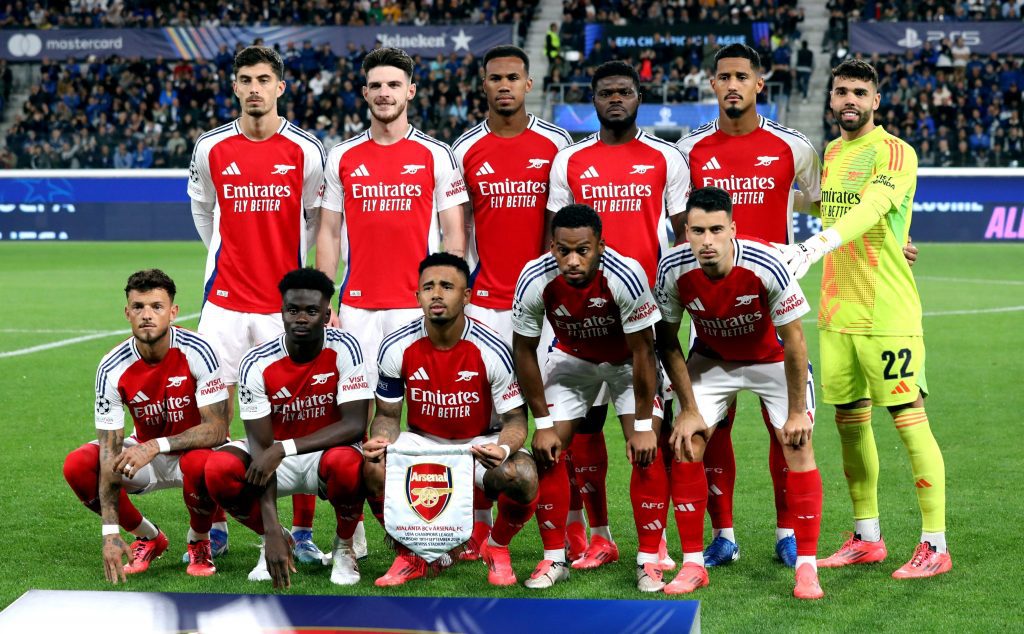Arsenal’s 4-3-3 Formation Explained: Tactical Breakdown and Player Roles
The 4-3-3 formation has become a hallmark of modern football, celebrated for its balance between attacking flair and defensive organization. For Arsenal, this tactical setup represents more than just numbers on a pitch—it embodies a philosophy of fluid, dynamic football that aligns with the club’s storied tradition of technical excellence and attacking creativity.
Under Mikel Arteta, the 4-3-3 has been reintroduced as a cornerstone of Arsenal’s tactical identity. By maximizing player strengths, emphasizing positional play, and adapting to the evolving demands of the Premier League, this formation has proven to be a versatile and effective system for the Gunners. It allows the team to dominate possession, exploit wide areas, and maintain a robust defensive structure during transitions.
This blog will take you through the intricacies of the Arsenal 4-3-3 formation explained in detail, exploring its tactical principles, the specific roles of each player, and why this setup suits Arsenal’s vision for success. Whether you’re a casual fan or a tactical enthusiast, this comprehensive breakdown will give you new insights into the formation that defines Arsenal’s modern approach to the game.
Tactical Advantages of the 4-3-3
The 4-3-3 formation offers a dynamic blend of attacking options, midfield control, and defensive stability, making it one of the most versatile setups in modern football. Here’s how Arsenal leverages the strengths of this formation:
a. Attacking Fluidity
One of the standout features of the 4-3-3 is its ability to overwhelm opposition defenses with attacking overloads:
- Width and Creativity: Wingers operate high and wide, stretching the opposition backline. This creates space for overlapping full-backs, providing additional attacking outlets.
- Central Striker’s Role: The central forward drops deep to link play, drawing defenders out of position and creating room for attacking runs from the wingers and advanced midfielders.
- Triangular Passing Combinations: With three attackers, Arsenal can form triangles in wide areas, enabling quick one-touch passing and opening up spaces for cutbacks and crosses.
b. Midfield Dominance
The 4-3-3 provides a perfect balance in midfield, ensuring control and creativity:
- Holding Midfielder: The deepest midfielder shields the defense, breaks up opposition play, and recycles possession effectively.
- Box-to-Box Midfielders: The two advanced midfielders support both attack and defense, maintaining high energy levels and contributing to Arsenal’s pressing game.
- Positional Play: The three-man midfield creates natural passing lanes, facilitating ball progression through the center and into wide areas.
c. Defensive Solidity
Despite its attacking intent, the 4-3-3 offers a strong defensive foundation:
- Compact Shape: When out of possession, the wingers drop back to form a compact midfield five, making it harder for opponents to exploit central spaces.
- Pressing Traps: Arsenal can implement high-press strategies, forcing opponents into wide areas where they are more likely to lose possession.
- Support from Full-Backs: The full-backs provide cover in wide defensive areas, while the center-backs focus on maintaining a solid defensive line.
This tactical adaptability ensures that Arsenal can both dominate possession and counterattack effectively, making the 4-3-3 a potent weapon in their arsenal.

Key Player Roles in Arsenal’s 4-3-3 Formation
a. Goalkeeper
- David Raya: As the primary goalkeeper, Raya is integral in initiating play from the back. His exceptional distribution skills enable Arsenal to build attacks seamlessly, while his shot-stopping abilities provide a reliable last line of defense.
b. Defenders
- Right Back: Jurrien Timber: Timber’s agility and technical skills make him a key player on the right flank. He contributes to both defensive solidity and offensive transitions, often providing width and supporting the right winger in advanced positions.
- Center Backs: William Saliba and Gabriel Magalhães: This central defensive partnership combines physicality with composure. Saliba’s anticipation and Gabriel’s strength ensure solidity at the back, while both are comfortable in possession, facilitating Arsenal’s play from defense.
- Left Back: Riccardo Calafiori: Calafiori’s energy and crossing ability add a new dimension to Arsenal’s left flank. His ability to balance defensive responsibilities with attacking support ensures stability and creativity down the left side.
c. Midfielders
- Defensive Midfielder: Thomas Partey: Partey brings a commanding presence in midfield, breaking up opposition attacks with his tackling and intercepting abilities. His passing range ensures Arsenal can transition quickly from defense to attack.
- Central Midfielders: Martin Ødegaard and Declan Rice:
- Ødegaard: The creative heartbeat of the team, Ødegaard orchestrates Arsenal’s play with his precise passing, vision, and ability to unlock defenses.
- Rice: Operating in a box-to-box role, Rice combines defensive awareness with the ability to carry the ball forward, offering both steel and composure in midfield.
d. Forwards
- Right Wing: Bukayo Saka: Saka’s pace and dribbling skills make him a constant threat down the right flank. His ability to cut inside onto his stronger left foot allows him to create shooting opportunities and deliver incisive passes.
- Left Wing: Gabriel Martinelli: Martinelli’s directness and high work rate stretch opposition defenses. His propensity to make diagonal runs behind defenders opens up spaces and creates goal-scoring chances.
- Center Forward: Gabriel Jesus: Leading the line, Jesus combines technical skill with relentless pressing. His movement off the ball disrupts defensive structures, and his link-up play facilitates the involvement of wingers and midfielders in attacking moves.
Can these stars bring some trophies back to the Emirates in this formation or does Arteta need to switch up his tactic?
